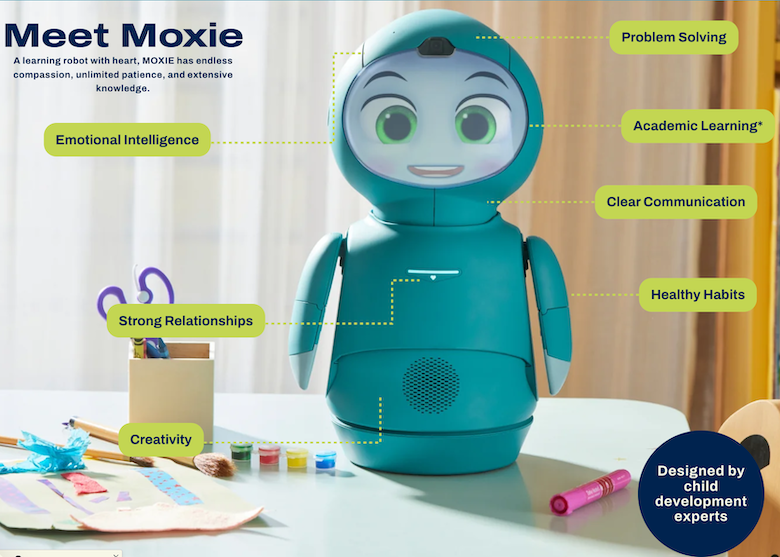
Embodied Inc.’s AI-powered robot, Moxie, is designed to help children overcome social anxiety and loneliness. Moxie uses AI to interact with children, improving their problem-solving, critical thinking, and emotional intelligence. It can remember past conversations, detect facial expressions, and even tell jokes. While Moxie is not meant to replace parenting, it can amplify parental efforts. The latest version of Moxie can change eye and skin color and interact with multiple children. However, the robot’s ability to handle nuanced and controversial topics remains a challenge.
The intersection of artificial intelligence and physical robotics has introduced innovations like Moxie, a robot designed to aid children’s social and emotional development. Developed by Embodied Inc., Moxie represents a leap towards integrating AI with tangible interactions, offering companionship and learning experiences for children aged 5 to 10. It can remember past conversations, detect facial expressions, and even tell jokes. While Moxie is not meant to replace parenting, it can amplify parental efforts. However, the robot’s ability to handle nuanced and controversial topics remains a challenge.
This advancement also raises critical concerns about the relationship between mind and body, especially in the context of AI. While AI like ChatGPT and Bard exhibit forms of ‘mind,’ the embodiment of AI in robots such as Moxie poses questions about the true nature of intelligence and its dependency on physical experiences and interactions.
Critics argue that AI’s intelligence, primarily built on language models without real-world physical experiences, might lack the depth of human understanding, suggesting a disconnect between these machines’ ‘minds’ and their physical ‘bodies.’ This perspective underscores a growing debate in the AI community about the necessity of grounding AI in the physical world for it to achieve genuine intelligence. Concerns extend to the safety and ethical implications of AI, particularly when these technologies interact closely with humans, as Moxie does with children. The potential for AI to inadvertently cause harm or be manipulated for undesirable purposes highlights the need for cautious development and rigorous oversight.
Despite these challenges, Moxie’s creation exemplifies the potential benefits of embodied AI, offering unique support to children while fostering skills like empathy and emotional intelligence. However, the broader implications of AI’s foray into human-like intelligence and physical interaction demand critical scrutiny. As AI continues to evolve, balancing innovation with ethical considerations will be paramount, ensuring these technologies enhance human well-being without compromising safety or moral values. The journey of Moxie and similar projects reflects both the promise and the pitfalls of blending AI with robotics, inviting a careful examination of our approach to AI’s role in society.

